Everyone dreams of having a lush green lawn in their yard. A hot coffee while reading the news on your turf makes it more desirable. Or you want to listen to a podcast; while relaxing on your green lawn!
It sounds like a perfect dream unless it is shattered by your muddy yard. You try hard to maintain your lawn. But somewhere, there’s a swampy spot in your yard, causing all the mud to spread across the area.
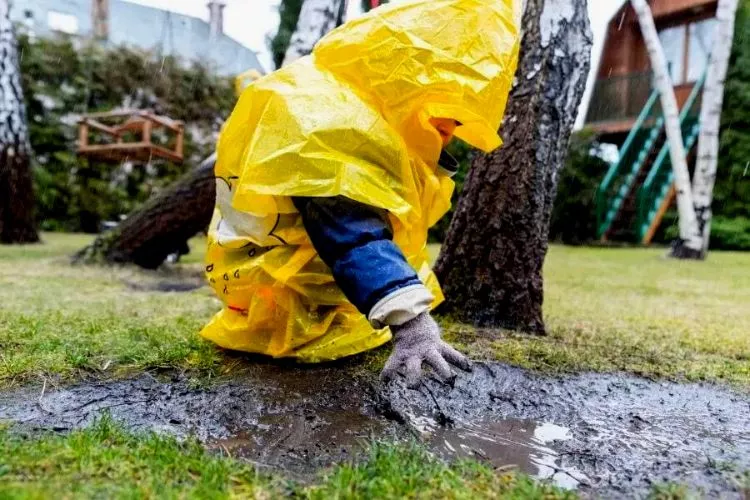
You end up dirtying your house after walking through the muddy lawn. Having pets may add more misery to the situation. The pets enter the house with dirty legs, burdening you with extra work.
The common reasons behind a muddy lawn include a locality with heavy rains, uneven leveling of the yard, water traps, and more. We have covered most of them in this article.
If you are looking for how to fix a muddy spot in the yard, you have arrived at the right place. Our detailed research on this topic will help you mend that spot in your yard.
How to fix a muddy spot in the yard? (step By Step Guide)
There are several ways to fix the muddy spot in your yard. Let’s have a look at them.
1. Level the yard and Remove standing water
An incorrect elevation of the yard may have low-lying spots. Excess water flows into these spots and gets absorbed in the soil. Avoid water getting trapped within these spots.
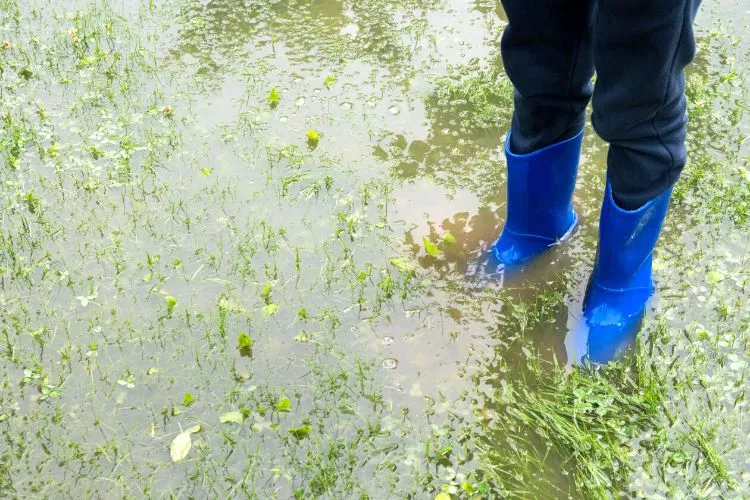
Level up your yard by filling up these low-lying spots with a mixture of fine gravel and soil. Ensure there are no low-lying spots where water can collect and create a puddle.
The ideal ratio for having a slop is 14 inches/foot from the pathway or house. It helps to drain water effortlessly.
2. Install a French Drain
The French Drain works on the conception of water flowing downwards through the most straightforward passage available.
The French Drain comprises flexible plastic pipe perforated with holes. This pipe is placed beneath the lawn to help water flow way. Identify the water puddle spot before working on the French Drain.
Create a trench leading to a location where the water can drain more quickly with a shovel. After digging the trench, line it up with pea gravel.
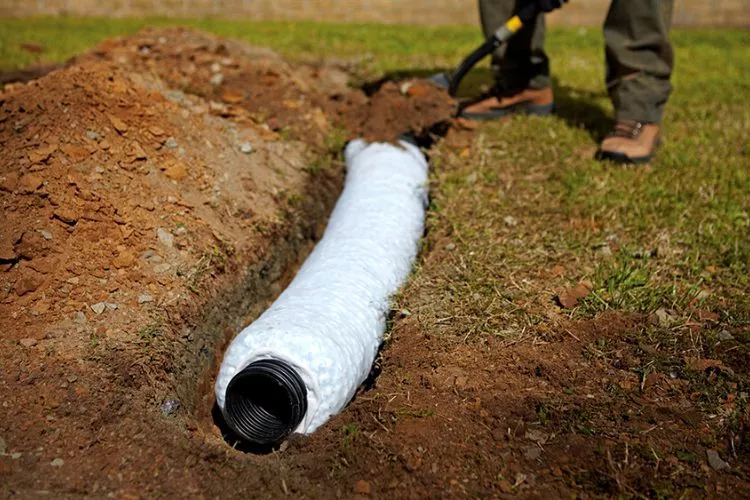
Wrap the perforated plastic pipe in a landscape fabric. Leave both ends of the pipe open; no need to cover them. Covering them will hamper the water drainage. Place this pipe over the pea gravel that you have already lined up.
The last step is to cover up the pipe with more pea gravel. Pea gravel helps ease the water to seep and drain through this pipe. A French drain is one of the most common and basic ways to keep water from standing on the grass.
3. Fix poor drainage
The soil in your yard may not drain water as it should. In that case, you can think of ways to fix the poor drainage. Herewith are some tips:
- Consider reducing the water supply to your lawn if you water manually.
- Install sprinklers and regulate the amount of water by scheduling at regular intervals.
- Dig out pathways to allow water to pass outside the yard; rather than stagnating at a particular spot.
- Growing water-loving plants is a natural way to control the imbalance of the water supply.
4. Top-Dress With Compost and Sand
Once you mow your lawn in spring, consider top-dressing it with compost and sand. Spread at least a layer of 0.25 to 0.5 inches on your yard. Compost helps provide organic components and drainage. It enriches the soil with organic material.
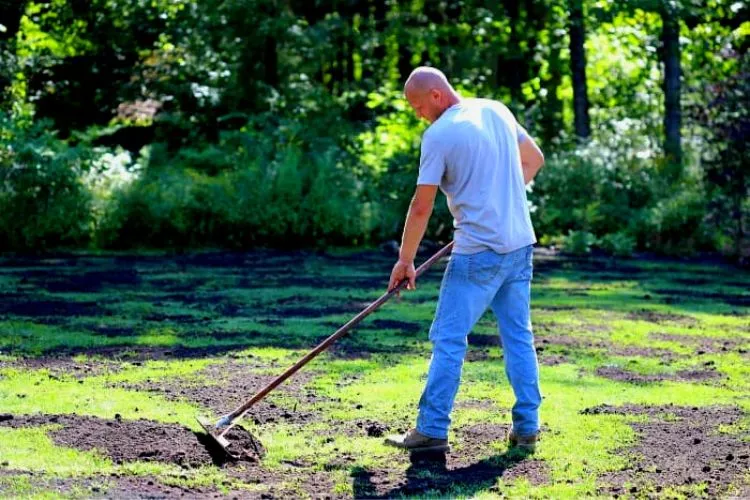
Sand helps enhance drainage. It also helps the root system to get more air. The sand being tough to compact, helps to have the yard leveled for a long time. Mix the sand and compost thoroughly before implementing, without fail.
5. Use Lawn Gravel
You can also add gravel in your yard to fix up poor drainage. Gravel is coarser than sand. It gets easy for water to flow through them, helping with better drainage.
6. Create a Creek Bed and Plant rain gardens
Creating a creek bed is an ideal solution for poor drainage. And complementing it with a rain garden helps you to balance the water supply.
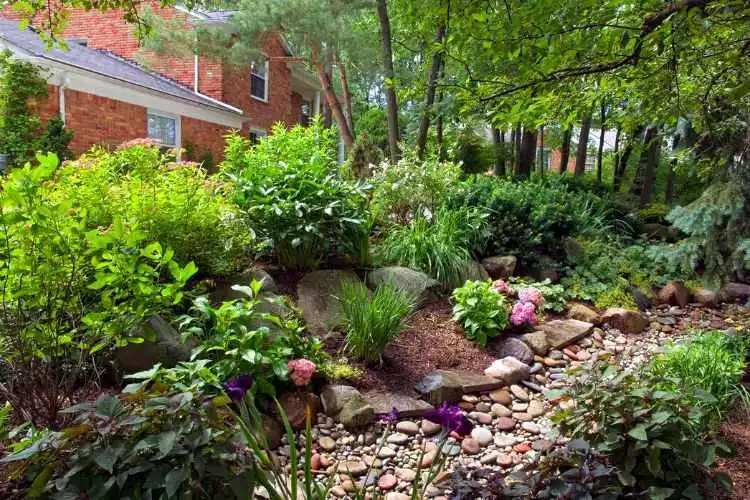
Let’s understand how you can build those:
- Creek bed: Dig a swale- a shoal drainage gutter. Line up rocks along its boundary to mark the swale’s shape. The rocks double up as a deterrent for any erosion or sprint. You can also use mulch for building the banks of the bed.
- Rain garden: A rain garden collects the water you redirected via the creek bed. In the rain garden, you can grow plants that love water.
7. Aerate the Lawn
Aeration will work only if the upper layer of the soil is holding the excess water. The aeration process doesn’t redirect water to any other area. It only helps to drain the water from the upper layer of soil to the lower layers.
The process involves poking holes into the ground. You can use a lawn aerator or a pitchfork. Don’t poke too deep. Approximately poking up to 50 percent of the pitchfork’s prongs will do the trick.
8. Dethatch Your Yard
Thatches are those small patches of grass originating from the soil. The main grass may perish, but the thatches remain on the top.

You can ignore a small number of thatches, but excessive thatches act as a wall between air and water, keeping the soil wet. It further results in decomposing the grass.
Therefore, it’s crucial to dethatch frequently. You can remove the thatches with a dethatching mower or a rake.
9. Control weeds
Weeds may also be a barrier between air and water. You can remove weeds by cutting /mowing/ pulling, mulching, girdling, and soil tilling/solarisation. In addition, you can also use herbicides to control them.
10. Add new topsoil
There’s no harm in top-dressing new soil onto your existing lawn. The grass will penetrate through the new soil eventually, depending on the layer thickness.
11. Redirect Downspouts
Check for blocked downspouts and clean them. You can also redirect these downspouts for water to flow to any other area, preventing water from reflowing into the yard.
12. Use Lime
You can use lime in place of gravel if not available. Lime is a favorite option for many professionals.
13. Use Kitty Litter
If you have a cat, you can use its excreted waste as manure for your soil.
14. Use Straw
Using straw bunches is a quick way to solve the muddy spot problem. But it’s not a permanent solution to it.
What soaks up mud?
Materials like gravel, lime, etc., will dehydrate the soil very quickly. Creating a well-drained system is a permanent solution while using a straw to fill up the low-lying areas is temporary.
Why is my yard always wet and muddy?
An unevenly leveled land may lead to poor drainage, resulting in your yard getting wet. It may even escalate in weakening your housing structure. A landscape design unaligned with the natural slope of the ground may hold excess water, wetting all the while.
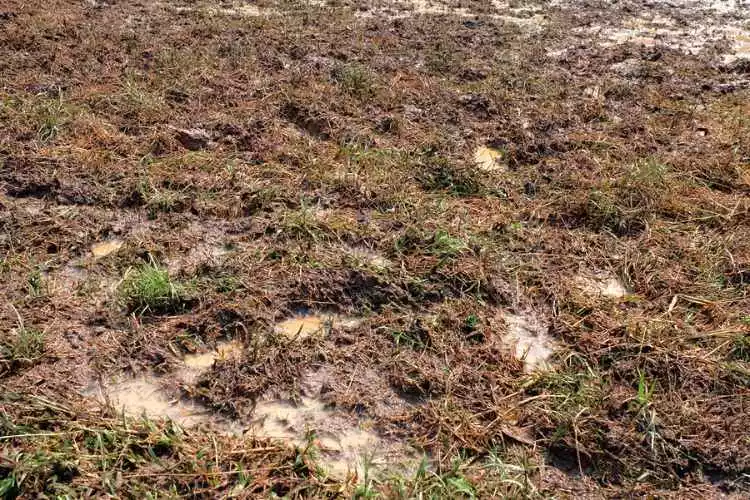
Faulty construction of paved concrete may also lead to a wet yard. A wrongly paved concrete surface will not allow the water to flow outside. Instead, it again redirects the water to flow back into the yard. Other reasons include blocked gutter downspouts, compact soil, and thatches.
In a few cases, the underground water level being too high also results in a muddy yard. Having a hardpan (a water-resistant subsoil) in your yard is another reason for keeping the yard excessively wet.
The Bad effects of Muddy Lawn
First of all, it’s an ugly scene. And to add to the woes, insects will love to breed over it. There is always a constant fear of getting infected with some disease. It will also attract pests, making it more painful for you.
A muddy lawn is slippery and always poses a threat whenever walking or running over it. Especially when you have small kids, you need to be extra careful.
A muddy lawn will eventually kill your grass and other plantations, compelling you to build everything from scratch.
You May Also Find Useful: How to Keep Pavers From Sinking
Frequently Asked Questions (fAQs)
How to fix muddy yards from dogs?
You can implement a few temporary solutions, such as filling the wet areas with straw bunches. You can apply the straw till you are ready with a more sustainable solution to fix your muddy yard.
You can also implement pine bedding in place of using straws. Alternate ways are to use the grid, rerouting the dog’s pathways, using sand, gravel, or lime, etc.
How to fix patchy muddy grass?
Dethatching the entire lawn will help you to fix patchy muddy grass. In addition, cleaning or extending the gutter downspouts, adding gravel or lime to the soil, or installing a French drain, creek bed, and rain garden will help you to make a beautiful lawn.
How to fix a muddy lawn in winter?
Dust off all the excess water on the yard surface using a broom. Push it all alongside the lawn edges.
Conclusion
A muddy lawn is a headache, as it invites many problems. Along with dirtying the house, you are always under the threat of getting infected. In addition, pests get attracted to a muddy lawn.
But thankfully, this guide regarding how to fix a muddy spot in the yard should help you. You can implement these temporary or permanent solutions based on your need. And then enjoy your lush green lawn with pride.
